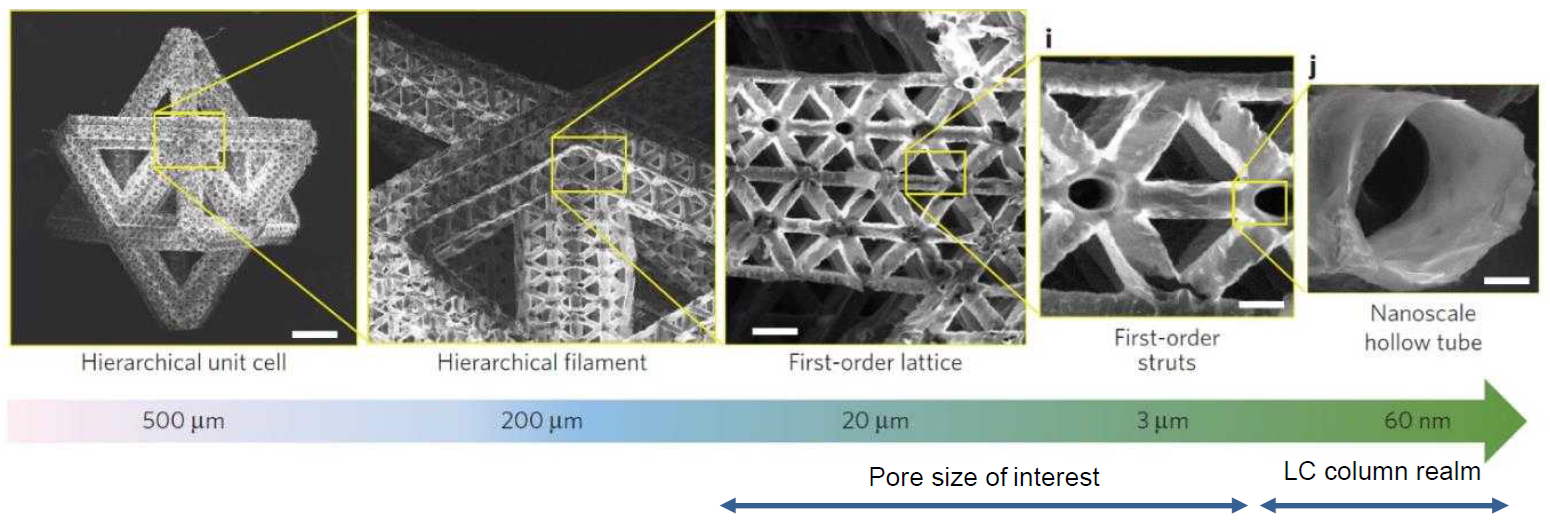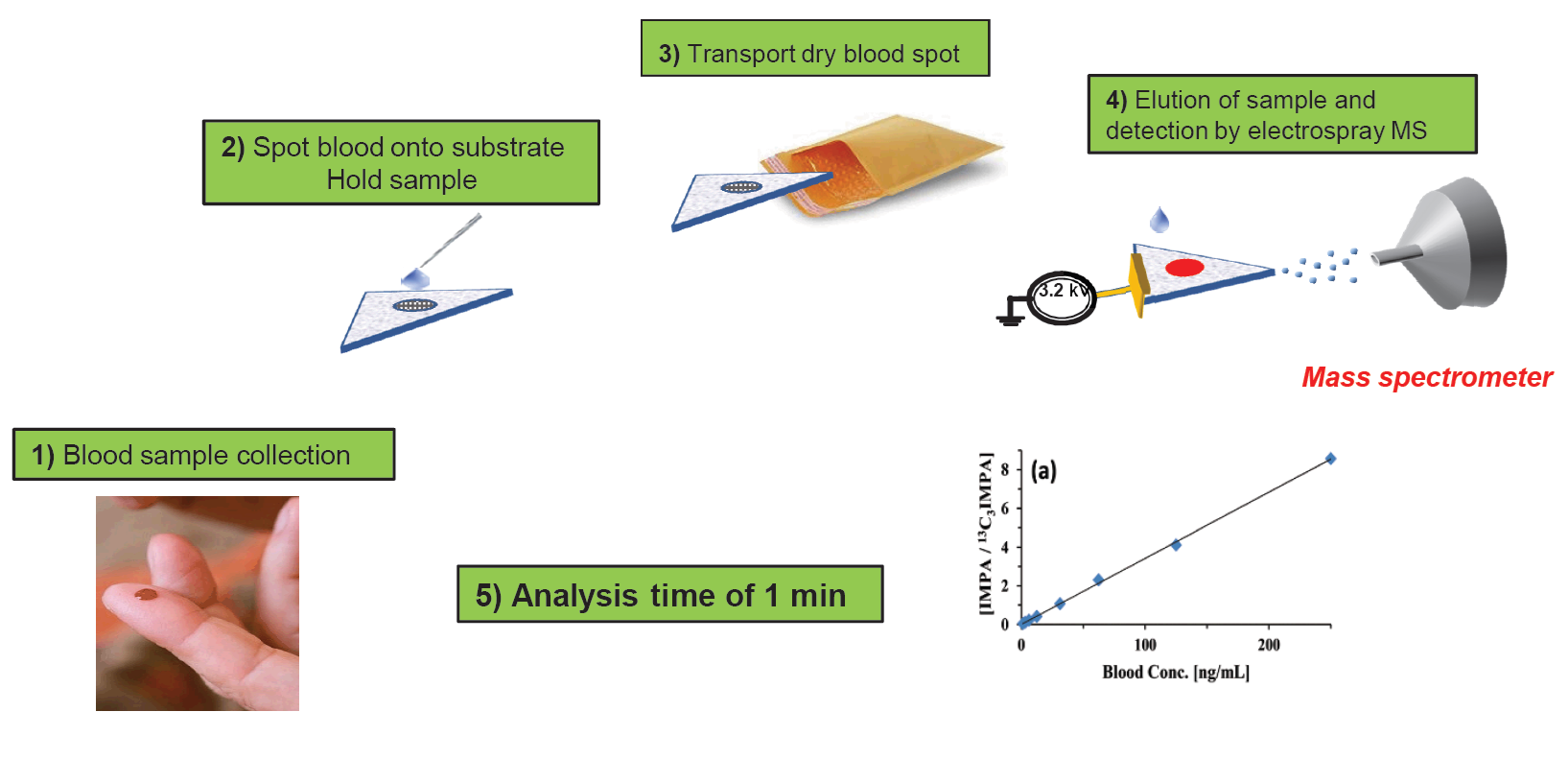Liquid Chromatography Mass Spectrometry (LC-MS) is a traditional analytical technique for the analysis of various molecules (particularly in complex samples) including chemical weapon agents and biotoxins. The drawbacks of LC-MS are the technique is time consuming, uses large amounts of solvents and requires technical expertise.
An alternative is direct ionization mass spectroscopy, which involves a faster simple, all-in-one sample processing and where ionization replaces the protracted liquid chromatography step. Paper Spray Mass Spectrometry (PS-MS) is the current state-of-the-art in direct ionization mass spectrometry. However, it is limited because it requires chromatography paper to be used as the substrate. Paper is made of cellulose – a single material with the same surface energy – thus not tunable and restricts the kind of molecules that could be analyzed.
To expand the range of molecules from the most complex (e.g. physiological fluids like blood and urine) to those that are incompatible with paper spray ionization (e.g. hydrophilic or large proteins), the substrate used in direct ionization mass spectrometry would need to advance beyond chromatography paper.
To get the best of both worlds – the sensitivity of LC-MS with the speed of PS-MS – and a functional substrate that can maintain sample integrity, LLNL researchers looked to 3D printing. They have patented a novel approach to create lattice spray substrates for direct ionization mass spectroscopy using 3D-printing processes.
Using a combination of Projection Micro Stereolithography (PµSL), Large Area Projection Micro Stereolithography (LAPµSL), and Lattice Fluidics, sample substrates (based on the octet-truss microlattice) with pore sizes in the desired range (10-100µm) for direct ionization mass spectrometry can be produced. The manufacturing process allows for different materials to be used in fabrication and full control of multiscale structures so that the substrate can be tuned for specific analytes of interest as well as optimized for various sample matrices (e.g. blood or other fluids, environmental samples).
To get the best of both worlds – the sensitivity of LC-MS with the speed of PS-MS – and a functional substrate that can maintain sample integrity, LLNL researchers looked to 3D printing. They have patented a novel approach to create lattice spray substrates for direct ionization mass spectroscopy using 3D-printing processes.
Using a combination of Projection Micro Stereolithography (PµSL), Large Area Projection Micro Stereolithography (LAPµSL), and Lattice Fluidics, sample substrates (based on the octet-truss microlattice) with pore sizes in the desired range (10-100µm) for direct ionization mass spectrometry can be produced. The manufacturing process allows for different materials to be used in fabrication and full control of multiscale structures so that the substrate can be tuned for specific analytes of interest as well as optimized for various sample matrices (e.g. blood or other fluids, environmental samples).
- Field collection of environmental (soil, water) and physiological samples (e.g. from remote locations)
- Monitoring of chemical and biological agents in humans and environmental samples
- Forensics and clinical toxicology
- Hospitals, clinical research, personalized medicine
- Food, beverage and drug integrity and safety
Current stage of technology development: TRL 2
U.S. Patent Application Publication No. 11688596 Systems and Methods Lattice Spray Substrates for Mass Spectrometry published 6/27/2023
U.S. Patent Application No. 2021/0053056 Systems and Methods for Reaction and Transport Engineering via Cellular Fluidics published 02/25/2021
U.S. Patent Application No. 2021/0077999 Systems and Methods for Reaction and Transport Engineering via Cellular Fluidics published 03/18/2021



